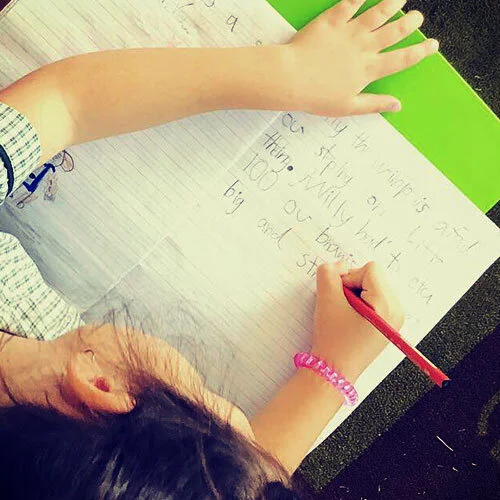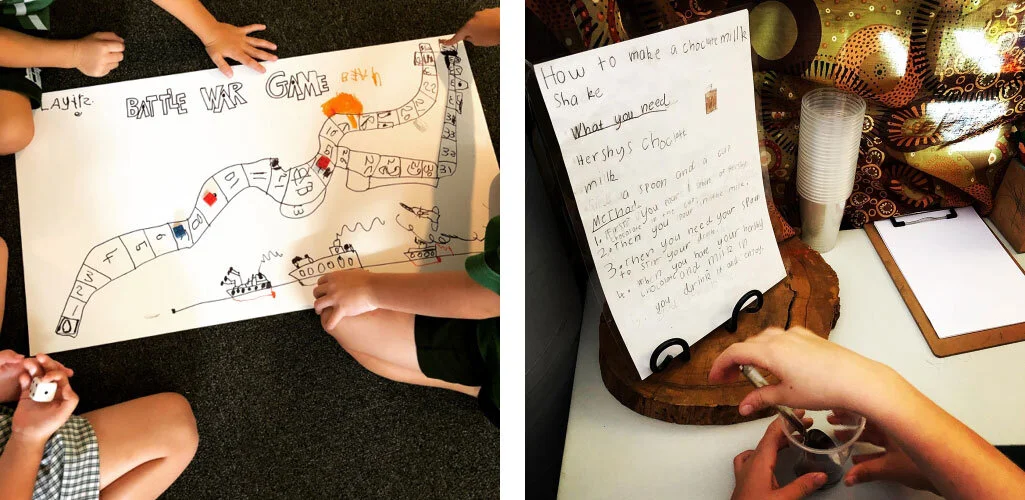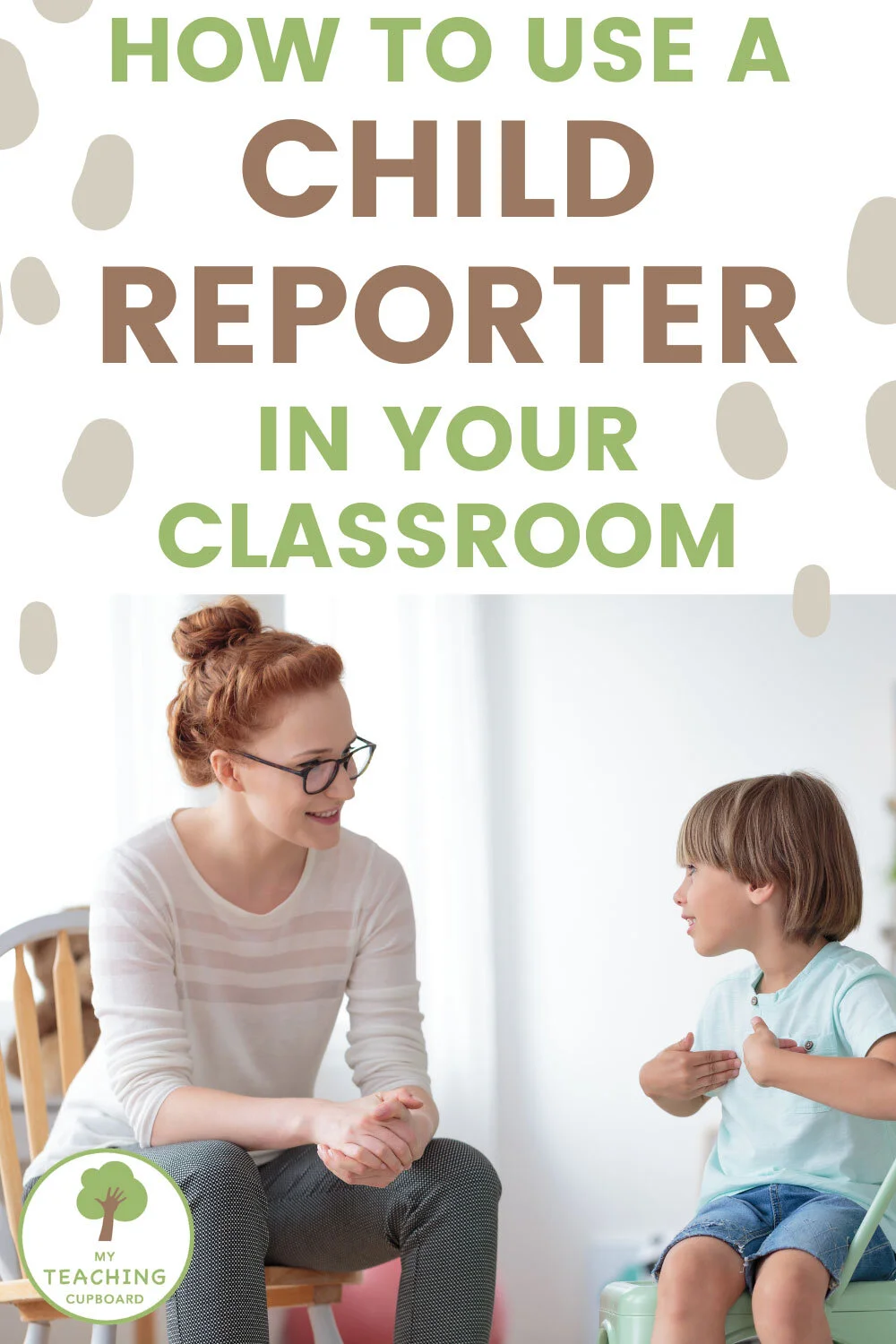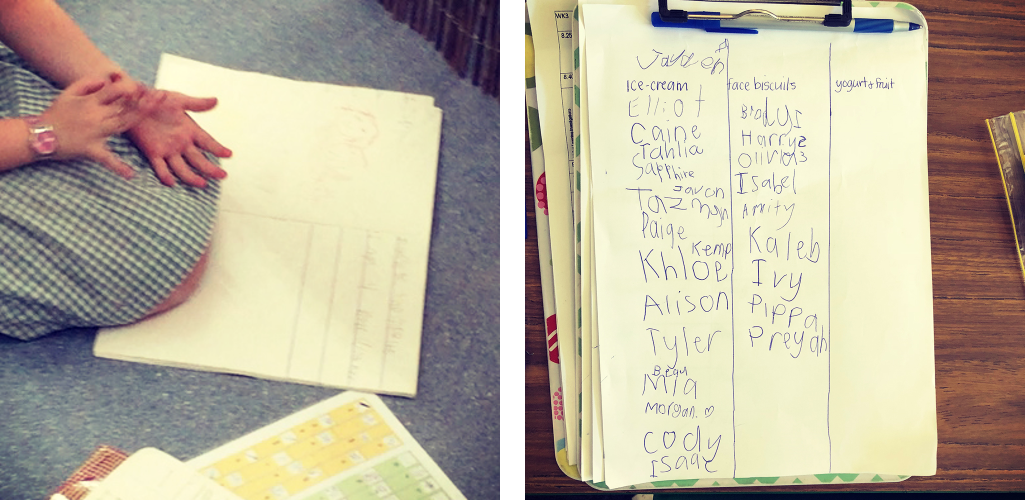Walker Learning Reporter Role
The classroom photographer and reporter roles are key elements of the Walker Learning Approach.
The Walker Learning Approach is an investigative play based pedagogy. It offers children personalised and authentic learning experiences. Walker learning is based on years of research about child development theory and brain research. If you would like to learn more about this highly effective way of teaching, I urge you to visit Early Life Foundations HERE.
The roles of child photographer and child reporter are core elements of Walker Learning and are vital to the correct implementation and subsequent success of this holistic pedagogy. If you would like to learn more about the role of the photographer child in Walker Learning, head over to my blog post - Photographer Child.
The Walker Learning Approach has several core elements. Having a child take on the role of the daily classroom reporter is one of these elements. The child reporter role is a valuable learning opportunity in any classroom, whether or not you follow the Walker Learning Approach.
This blog post will cover
What A Classroom Reporter Does
Why You Need a Classroom Reporter
How to Implement the Child Reporter Role in Your Classroom
Free Resources to Help You with Your Classroom Reporter
How to Plan a Purposeful Task for Your Reporter Child
Some Ideas for Your Classroom Reporter Tasks
What does a Classroom Reporter do?
In the big outside world, a real life journalist or reporter gathers information through interviews and investigating stories or events. Very often these roles require them to research topics assigned to them and to then report their findings through recorded stories.
The role of a child reporter in the classroom is not very different. The reporter child researches classroom events and collects stories or data around topics their teacher has assigned to them. At the end of an investigative play session, the child reporter informs the class about events or learning that has happened.
The classroom reporter can record information by
writing
drawing
recording
constructing
The reporter should also review or edit their work before presenting it to the class.
Why You Need a Classroom Reporter
Having a child as a classroom reporter is an excellent teaching strategy for you to prioritize curriculum learning intentions and to gain insight into each of your children’s individual developmental abilities, understandings, and interests.
A classroom reporter will improve the learning in your classroom. Our classroom reporter has an important role in our learning each day, and I could not be teaching as effectively without one.
The information collected by the child reporter can become useful learning resources. In fact, I have noticed the entire class is highly engaged whenever I use the reporter’s information in our lessons. The children instantly relate to the reporter’s work as it relates to familiar classroom events around topics and resources we are all currently using and learning about.
The children will love to take on the important role of classroom reporter. You will find they usually perform the role with commitment and enthusiasm. The reporter role makes children feel important and valued. They get a self-esteem boost whenever they report back to the class.
Having the entire class interested and discussing the work of your reporter also helps to build a strong classroom community. A community where every child’s work is respected and valued. The children will soon see themselves as essential participants in the classroom learning if you intentionally value the work of your classroom reporter.
The children in your class will also experience authentic literacy when they take on the tasks of classroom reporter. They will see written communication as personally meaningful and writing as a purposeful method of self-expression.
Another reason you need a classroom reporter is for the extra learning resources your reporter can provide. The child reporter can make reference cards, information posters or texts which can then be used as resources in your investigation areas or learning centres. I often refer to the reporter’s work in small group activities and lessons too. Turning the reporter’s work into classroom resources is also another way to build the reporter child’s self-esteem and your classroom community.
Using and displaying the resources made by your child reporter will ensure that learning is visible in your classroom. Making learning visible is a concept discussed by education researcher John Hattie. (Download Article HERE) Hattie found that effective learning must be seen and obvious, not assumed.
So one more reason you need a classroom reporter is to document the children’s learning. The reporter’s work will become a valuable record of your children’s understandings and thinking. This written evidence can then be used to inform your assessments and planning. Documentation and record keeping are usually teacher responsibilities, and yet the children are quite capable of sharing this task with you.
Sometimes a child will surprise me with the work they produce in their reporter role. Their work provides a valuable insight into the developmental level of that child and how they view their world. A class discussion of their work can often act as a springboard for future investigations or lessons too.
As a child performs the role of reporter in your classroom, they will develop their communication and social skills as they collect information and interact with their peers. Facilitating children’s social engagement and interactions with their peers (particularly with those who they may not normally associate with) is a key learning intention of the reporter role.
How to Implement the Child Reporter Role in Your Classroom
We start each day in the classroom with a morning session/tuning-in time at our meeting area on the carpet. In this session, the teacher introduces the curriculum learning intentions for the day, marks the roll, discusses the class calendar, and introduces the reporter and photographer children for the day. You can read more details about how to run a tuning-in session at this blog post: How To Run A Tuning-in Session.
Each day in the classroom, a child will have a turn to be the classroom reporter. We use a roster system to organise the photographer and reporter roles. There is a checklist displayed in our meeting area. When a child has their turn to be the daily reporter, we check their name off the list. If you have the checklist displayed, any child eagerly awaiting their turn can see their name coming up and hopefully stop asking when it will be their turn. You can download an editable reporter checklist along with some other useful reporter resources HERE in my FREE resource library.
First the reporter comes to the front of the class to collect a clipboard they will use to record their work. Then the teacher assigns this child a specific reporter task. The task is linked to the current curriculum learning intentions, but it should also link to the personalised learning outcomes for that individual reporter child as well.
The teacher thoughtfully plans the personalised reporter task. It should accommodate the individual child’s developmental level and help them move forward in their personal learning journey. If you plan for a task which is not too difficult or time-consuming, the reporter will only need to carry out their role for part of the investigation time. As children get older and more accustomed to the role, we can ask them to do more complex tasks.
It is important to explain the reporter’s task in front of the entire class. This further revises your curriculum learning intentions, ensures everybody is aware of the reporter child’s role and adds to the understanding that this role carries responsibilities and expectations.
Sometimes a child will require a peer buddy to help them with their task. It is advisable to explain that we assign this buddy to assist the reporter only. It is not the buddy’s role to take over the task or to do it for their reporter friend.
At the morning session, the reporter will be one of the last children to leave the meeting area. When all the children in the class have settled into their morning investigations, the teacher should spend some time with the reporter. Working with this child early in the session, ensures he is clear with the set task and will more likely produce some quality work.
Investing a little personal time with the reporter will give you an opportunity to observe and get to know this little classmate. It will also help you build a supportive relationship with him and scaffold his learning if need be.
Later in the investigation session, the teacher should check-in with the reporter again. It is important to review the reporter’s work because the class will look at this work later in the day. It needs to be relevant and to a reasonable standard.
At reflection time, the reporter will report back and share the results of the set task. Other children sometimes make comments or ask questions. You might even choose to revisit the reporter’s work later in the day during explicit teaching time too.
Free Reporter Child Resources to Help You with Your Classroom Reporter
I have seen reporter vests or lanyards being worn by children in other classrooms. This helps to distinguish the child reporter. It also reinforces the idea that the reporter child has an important role to play in the classroom that day. Other classrooms have a sign announcing the name of the child reporter for the day. If you would like to adopt any of these ideas in your classroom, I have some reporter documents to help you in my FREE Resources Library HERE.
How to Plan a Purposeful Task for the Reporter Child
The teacher designates the reporter task each day. Remember that the tasks should link to the curriculum learning intentions and, if possible, personalised for each child depending on their strengths and needs. The reporter tasks and how their work will be used are always teacher planned and directed.
When choosing a task, you should first look over the learning intentions and lessons you have planned for the day. Use your planning documents to guide your decision for the reporter’s task. So, for example, if you are learning about patterns in Maths, the reporter’s task might be to find and copy 2 examples of patterns in your classroom. The reporter task should not be a long, arduous assignment. It should be a small, achievable task.
Next, in your planning, decide when the class will look at the reporter’s work. You can discuss it at the learning reflection time following investigations each day, or it could act as a warm-up in a related explicit teaching lesson planned for later in the day. It is important to view the reporter’s work that day. The reporter child is always keen to share their work, and we must view it as an important classroom resource.
If you need task cards in group rotations, reference cards or charts for a math investigation area, assign the reporter the role of making these resources. Laminate the reporter’s work and use it as a learning resource. Classroom community is important and using a child’s work like this sends the message their work is a valuable resource and that the reporter plays a vital classroom role.
Some Ideas for Your Classroom Reporter Tasks
As the reporter role is a teacher designed and designated task, it might be helpful for you to get some practical task ideas planned and ready. The key is to ensure that the task relates to your current learning intentions AND personalised to each child’s level of learning.
Early in the year, the reporter tasks can be very simple. Set tasks like writing their name and painting a self-portrait, drawing 5 cats, writing 2 words found in environmental print. As the year progresses and your children become accustomed to the role and their recording methods become more advanced, the reporter tasks can also become more complicated.
Numeracy Ideas
Draw a picture of 7 dogs (or any number and topic under study), make a list of numbers you can find in the classroom, trace the face of a 3D shape, draw 3 objects shorter than this pencil or an object 10cm wide, make a set of 10 subitising cards using the dot stampers.
Literacy Ideas
Draw 3 pictures of things starting with the /b/ sound, make a list of sight words found in a big book, draw a picture to represent the beginning of a story, write the names of the characters in this story, write the steps of a procedure.
Science Ideas
Draw a picture of 2 living things in the playground, make a list of wooden items in our classroom, paint a picture showing the things we might see in a day sky, make a poster teaching us about objects that can roll.
Social & Emotional Ideas
Draw 3 friends you observed showing cooperation today, list 4 children who you think used the resources respectfully, paint a picture of a good friend (discuss why at the class reflection time).
Want more ideas for your reporter tasks?
I have compiled over 200 different reporter tasks for you. These tasks cover the Literacy, Numeracy and Science curriculum areas and are aligned to the P-2 curriculum.
If you found this post useful, please consider sharing it…













